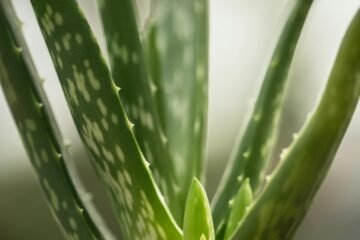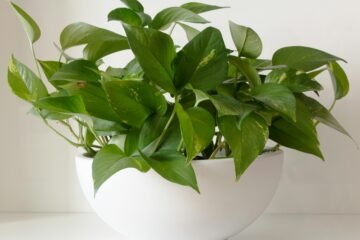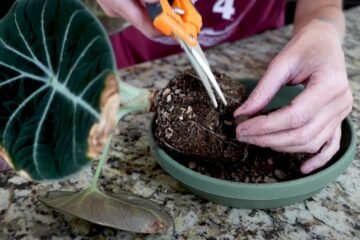Unlock the Secrets to Thriving Rubber Plants: Indoor Care Made Simple
What Is Rubber Plant?
Over the past decade, my journey with the rubber plant (Ficus elastica) has been nothing short of rewarding. This plant, with its striking, glossy leaves, has not only added a touch of elegance to my home but also taught me the nuances of indoor gardening. Originating from the rainforests of South Asia and Southeast Asia, the rubber plant is known for its robust nature and adaptability. It thrives in a variety of environments, making it a favorite among both novice and seasoned plant enthusiasts. The dark green, sometimes variegated leaves, are a visual delight, providing a lush, tropical feel to any indoor space. One of the most appealing aspects of the rubber plant is its ability to grow tall, often reaching heights of 6-10 feet indoors, creating a striking vertical element in home decor. Over the years, I’ve found this plant to be not just an ornamental addition but also a conversation starter, with guests often marveling at its vibrant foliage. As someone who has nurtured these plants for ten years, I can attest to their resilience and relatively low maintenance needs, making them an ideal choice for anyone looking to add a bit of greenery to their home.
| Common Name | Rubber tree, rubber plant |
| Botanical Name | Ficus elastica |
| Plant Type | Broadleaf evergreen |
| Toxicity | Toxic to dogs and cats |



Can Rubber Trees Grow Inside?
Absolutely, rubber trees can thrive indoors, and my experience has shown this to be an easy and rewarding method. When I first brought a small rubber plant into my home, I was impressed by how quickly it adapted to indoor conditions. Unlike some finicky houseplants, the rubber plant doesn’t demand constant attention. It thrives in bright, indirect light but can also tolerate lower light levels, making it versatile for various spots around the house. Over the years, I’ve found that the key to a healthy indoor rubber plant is not overwatering; allowing the top inch of soil to dry out before watering again has prevented the dreaded root rot. Its moderate humidity needs are easily met in most home environments, and occasional misting can keep its leaves looking lush. Pruning has been straightforward, helping to maintain the plant’s shape and promote new growth. In essence, the rubber plant’s adaptability and low-maintenance nature make it an excellent choice for indoor gardening, even for those who might not have a green thumb. My decade-long experience with these resilient plants has only solidified my appreciation for their beauty and ease of care.
How to Grow Rubber Tree Indoors



The rubber plant (Ficus elastica) is a fantastic addition to any indoor space, boasting large, glossy leaves that can enhance your home’s aesthetic appeal. After a decade of nurturing these resilient plants, I’ve gathered a wealth of knowledge on how to keep them thriving indoors. Here are my most effective tips and tricks for caring for your rubber plant.
Light Requirements
Rubber plants thrive in bright, indirect light. Position your plant near a window where it can receive ample sunlight, but avoid direct exposure, which can scorch the leaves. If natural light is limited, rubber plants can adapt to lower light conditions, though their growth might slow down.
Watering
One of the most crucial aspects of rubber plant care is proper watering. Overwatering is a common mistake that can lead to root rot. I’ve found the best approach is to water the plant thoroughly, then let the top inch of soil dry out before the next watering. In winter, reduce the watering frequency as the plant’s growth slows down.
Humidity and Temperature
Rubber plants prefer moderate to high humidity. In dry climates or during winter when indoor air can become very dry, misting the leaves occasionally or placing the plant on a humidity tray can help. They thrive in temperatures between 60-75°F (15-24°C) and should be kept away from cold drafts and sudden temperature changes.
Soil and Fertilization
A well-draining potting mix is essential for rubber plants. I recommend using a mix of peat, pine bark, and perlite to ensure good drainage. During the growing season (spring and summer), fertilize the plant every month with a balanced liquid fertilizer to support its growth. In the fall and winter, reduce fertilization to once every two months.
Pruning
Regular pruning helps maintain the shape of your rubber plant and encourages bushier growth. When pruning, make clean cuts just above a leaf node or branch junction. This not only keeps the plant looking neat but also promotes new growth. Pruning can also help manage the plant’s height if space is limited.
Cleaning the Leaves
Dust can accumulate on the broad leaves of rubber plants, hindering photosynthesis. Every few weeks, gently wipe the leaves with a damp cloth to keep them clean and glossy. This simple task can also help you inspect the plant for pests or other issues.
Repotting
Rubber plants can outgrow their pots every 2-3 years. When you notice the roots growing out of the drainage holes or the plant becoming root-bound, it’s time to repot. Choose a pot that is one size larger and refresh the soil. Repotting in the spring is ideal as it coincides with the plant’s active growing period.
Dealing with Pests
While rubber plants are relatively resistant to pests, they can occasionally fall victim to spider mites, mealybugs, and scale. Regularly inspect your plant and, if needed, treat any infestations with insecticidal soap or neem oil. Isolating the affected plant can prevent the pests from spreading to other plants.
Moving Rubber Plant Outdoors and indoors

By timing the transition of your rubber plant between indoor and outdoor environments carefully, you can take advantage of the benefits each setting offers while minimizing stress and potential damage. Following these guidelines and avoiding common pitfalls will ensure your rubber plant remains healthy and vibrant year-round. With a little planning and attention to detail, your rubber plant can enjoy the best of both worlds, thriving indoors during colder months and flourishing outdoors in the summer.
When to Move Your Rubber Plant Outdoors
Spring Transition
- Timing: Late spring, when nighttime temperatures consistently stay above 60°F (15°C).
- Process: Begin by placing the plant in a shaded or partially shaded area for a few hours each day. Gradually increase its exposure to outdoor conditions over one to two weeks. This gradual acclimation prevents shock from sudden environmental changes.
- Benefits: The increased natural light, humidity, and air circulation outdoors during summer months significantly boost the plant’s growth and overall health.
When to Bring Your Rubber Plant Indoors
Autumn Transition
- Timing: Early to mid-autumn, before nighttime temperatures drop below 60°F (15°C).
- Process: Gradually reduce the plant’s exposure to outdoor conditions over a week, bringing it inside for a few hours each day. This helps the plant readjust to the indoor environment.
- Benefits: Bringing the plant indoors before temperatures get too cold prevents stress and potential damage from cold drafts and sudden temperature changes.
Things to Avoid
- Sudden Temperature Changes: Avoid exposing your rubber plant to sudden shifts in temperature. Gradual acclimation both when moving outdoors in spring and back indoors in autumn is key to preventing shock.
- Direct Sunlight: When first moving the plant outdoors, avoid placing it in direct sunlight. The intense rays can scorch the leaves, especially if they are used to lower indoor light levels. Gradual exposure to light is essential.
- Overwatering: Outdoor conditions can dry out soil faster than indoor environments, but it’s crucial not to overcompensate by overwatering. Always check the soil moisture before watering to avoid root rot.
- Pests: Outdoor environments expose your plant to different pests. Regularly inspect your plant for signs of aphids, spider mites, and scale. Treat any infestations promptly and isolate affected plants to prevent spreading.
- Wind Exposure: Strong winds can damage your plant’s leaves and stems. Ensure the plant is placed in a sheltered spot if your area experiences strong winds.




0 Comments